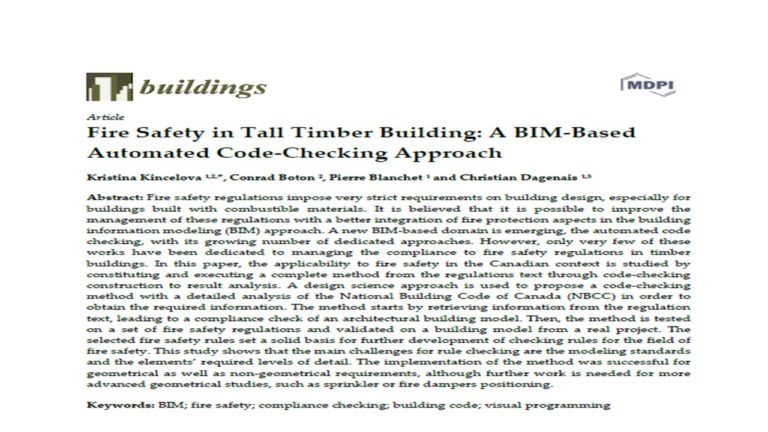Abstract
Fire safety regulations impose very strict requirements on building design, especially for buildings built with combustible materials. It is believed that it is possible to improve the management of these regulations with a better integration of fire protection aspects in the building information modeling (BIM) approach. A new BIM-based domain is emerging, the automated code checking, with its growing number of dedicated approaches. However, only very few of these works have been dedicated to managing the compliance to fire safety regulations in timber buildings. In this paper, the applicability to fire safety in the Canadian context is studied by constituting and executing a complete method from the regulations text through code-checking construction to result analysis. A design science approach is used to propose a code-checking method with a detailed analysis of the National Building Code of Canada (NBCC) in order to obtain the required information. The method starts by retrieving information from the regulation text, leading to a compliance check of an architectural building model. Then, the method is tested on a set of fire safety regulations and validated on a building model from a real project. The selected fire safety rules set a solid basis for further development of checking rules for the field of fire safety. This study shows that the main challenges for rule checking are the modeling standards and the elements’ required levels of detail. The implementation of the method was successful for geometrical as well as non-geometrical requirements, although further work is needed for more advanced geometrical studies, such as sprinkler or fire dampers positioning.
Fire Safety in Tall Timber Building: A BIM-Based Automated Code-Checking Approach
8 juillet 2020


